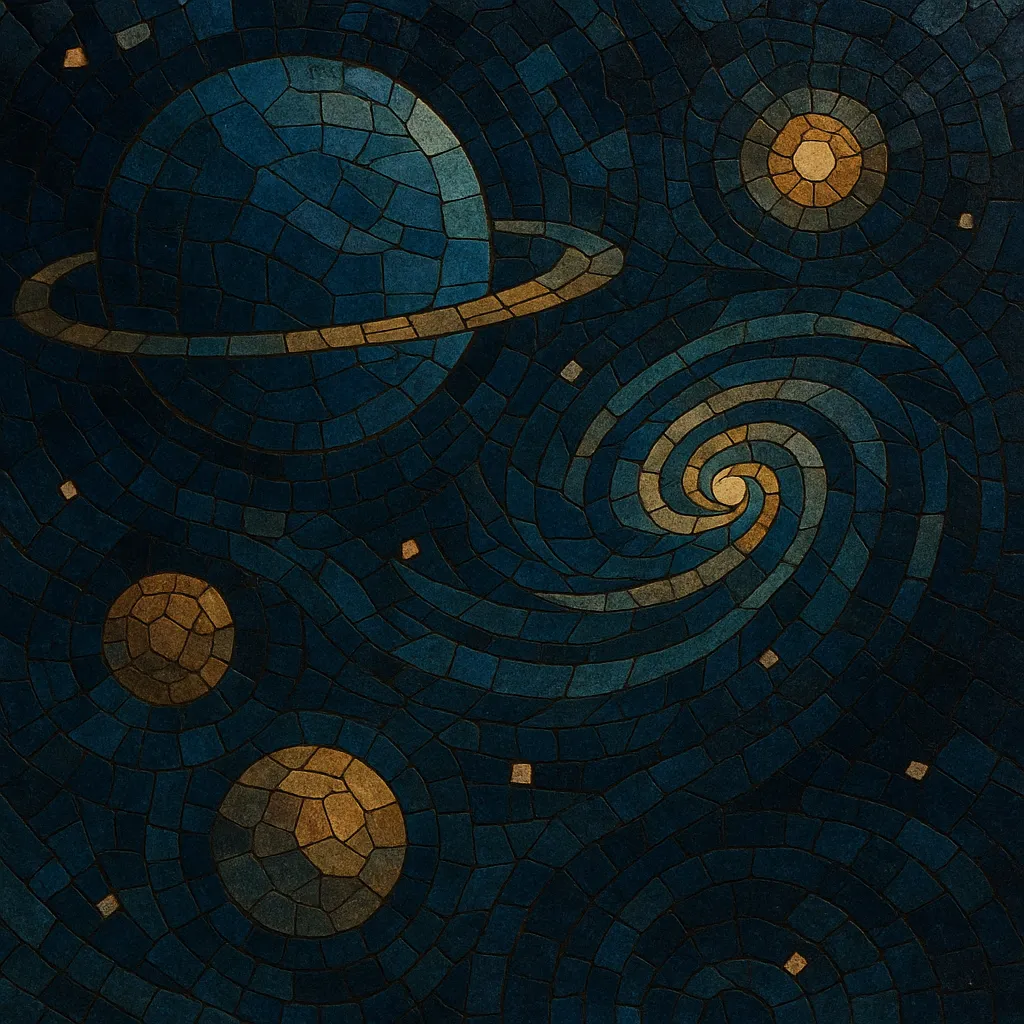Space ambient is a substyle of ambient music devoted to evoking cosmic scale, interstellar travel, and the vastness of outer space. It emphasizes expansive soundscapes, slow-evolving drones, and a strong sense of spatial depth created by long reverbs, delays, and careful stereo imaging.
The music typically avoids overt rhythm and melody in favor of sustained pads, subtly shifting harmonies, and quiet textural details. Analog and digital synthesizers, modular systems, and granular processing are common tools, often complemented by found sounds, radio/space transmissions, and gentle field recordings. The result is immersive, contemplative listening that suggests weightlessness, distance, and awe.
Space ambient coalesced out of the 1970s ambient and kosmische/Berlin School traditions. While Brian Eno formalized the idea of ambient as music for environments, German artists like Tangerine Dream and Klaus Schulze pioneered long-form, synthesizer-driven soundscapes that felt explicitly cosmic. Early space-themed recordings and the legacy of space age pop also laid conceptual groundwork, as did the growing availability of analog synths and tape-based studio experimentation.
In the 1980s, space ambient became more clearly defined. Eno’s "Apollo: Atmospheres and Soundtracks" (1983) and American artists such as Steve Roach, Michael Stearns, and Jonn Serrie crafted expansive, high-fidelity atmospheres aligned with the aesthetics of space exploration. In the 1990s, labels like FAX +49-69/450464 (Pete Namlook), Hearts of Space, Hypnos, and others nurtured a community of artists releasing deeply immersive, long-form works. Advances in digital synthesis and reverb processing enabled the genre’s characteristic vast spatial imaging.
With the rise of software instruments, high-quality convolution reverbs, and accessible mastering tools, space ambient flourished in independent and online scenes. Artists from psybient/downtempo circles (e.g., Carbon Based Lifeforms) further popularized airy, cinematic space textures. Streaming platforms and sleep/meditation contexts broadened the audience, while modern modular synthesis revived hands-on approaches to evolving drones. Today, space ambient remains a living tradition at the crossroads of ambient, experimental electronic music, and sonic art devoted to evoking cosmic awe.
Use sustained pads and evolving drones from analog/digital synths, modular systems, and software instruments. Favor long attack and release envelopes, slow LFOs, gentle filter sweeps, and subtle modulation to keep movement organic. Employ very long reverbs, diffuse delays, and careful stereo imaging (or surround/ambisonics) to create a sense of vastness and depth.
Keep harmony static or slowly shifting, often centered on a single tonal center or mode (Lydian, Dorian, or open fifths work well). Avoid dense chord changes; instead, layer timbral variations and micro-movements. Use sparse melodic fragments—if any—so that texture remains the focal point. Quiet noise floors, distant radio chatter, or processed field recordings can suggest cosmic environments.
Minimize or omit percussion. If pulses are used, keep them very slow, soft, and textural (e.g., distant sub pulses or granular ticks). Structure the piece as an unfolding journey: begin with a nearly silent bed, introduce gradual layers, and allow sections to morph over long timescales rather than with abrupt transitions.
Prioritize headroom, gentle dynamics, and extensive spatial processing. Employ EQ carving to avoid low-end buildup, and use high-quality reverbs (plate, shimmer, or convolution) with long decay times to emulate vast spaces. Automate reverb/delay sends and stereo width to convey motion through an imagined cosmos.
Anchor the composition to a space-related concept (nebulae, orbits, interstellar drift). Let that concept guide timbral choices, density, and pacing. Titles and subtle sonic cues (comms beeps, synthesized cosmic winds) can reinforce the narrative without breaking immersion.


